Facts & Figures 2024: How Does Your State Compare?
Facts & Figures serves as a one-stop state tax data resource that compares all 50 states on over 40 measures of tax rates, collections, burdens, and more.
2 min readHow does South Dakota’s tax code compare? South Dakota does not have an individual income tax. South Dakota also does not have a corporate income tax. South Dakota has a 4.20 percent state sales tax rate and an average combined state and local sales tax rate of 6.11 percent. South Dakota has a 1.01 percent effective property tax rate on owner-occupied housing value.
South Dakota does not have an estate tax or inheritance tax. South Dakota has a 30 cents per gallon gas tax rate and a $1.53 cigarette excise tax rate. The State of South Dakota collects $4,619 in state and local tax collections per capita. South Dakota has $7,398 in state and local debt per capita and has a 100 percent funded ratio of public pension plans. South Dakota’s tax system ranks 2nd overall on the 2025 State Tax Competitiveness Index.
Each state’s tax code is a multifaceted system with many moving parts, and South Dakota is no exception. The first step towards understanding South Dakota’s tax code is knowing the basics. How does South Dakota collect tax revenue? Click the tabs below to learn more! You can also explore our state tax maps, which are compiled from our annual publication, Facts & Figures 2024: How Does Your State Compare?
Subscribe to get insights from our trusted experts delivered straight to your inbox.
Subscribe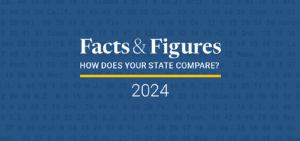
Facts & Figures serves as a one-stop state tax data resource that compares all 50 states on over 40 measures of tax rates, collections, burdens, and more.
2 min read
The State Tax Competitiveness Index enables policymakers, taxpayers, and business leaders to gauge how their states’ tax systems compare. While there are many ways to show how much state governments collect in taxes, the Index evaluates how well states structure their tax systems and provides a road map for improvement.
115 min read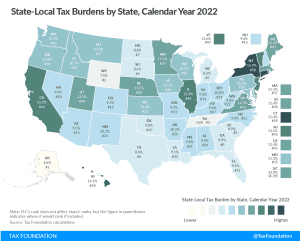
Tax burdens rose across the country as pandemic-era economic changes caused taxable income, activities, and property values to rise faster than net national product. Tax burdens in 2020, 2021, and 2022 are all higher than in any other year since 1978.
24 min read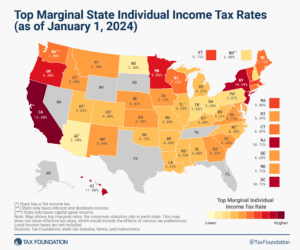
Individual income taxes are a major source of state government revenue, accounting for more than a third of state tax collections. How do income taxes compare in your state?
8 min read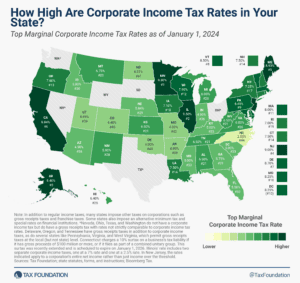
Graduated corporate rates are inequitable—that is, the size of a corporation bears no necessary relation to the income levels of the owners.
7 min read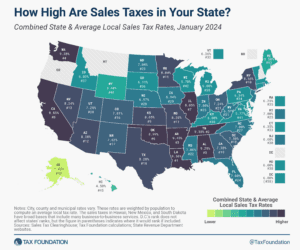
Retail sales taxes are an essential part of most states’ revenue toolkits, responsible for 32 percent of state tax collections and 13 percent of local tax collections (24 percent of combined collections).
9 min read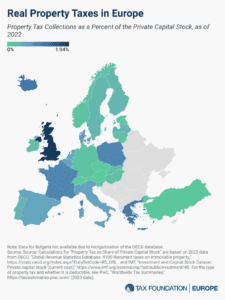
High property taxes levied not only on land but also on buildings and structures can discourage investment in infrastructure, which businesses would have to pay additional tax on.
3 min read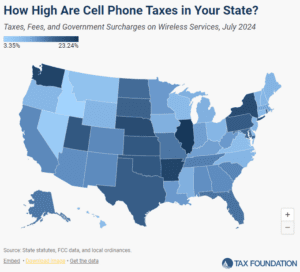
Wireless taxes and fees set a new record high in 2024.
23 min read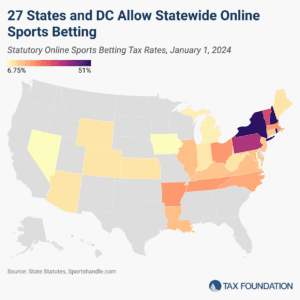
Legal sports betting has grown rapidly since the Supreme Court granted states the ability to establish online sports betting markets in Murphy vs. NCAA in 2018.
3 min read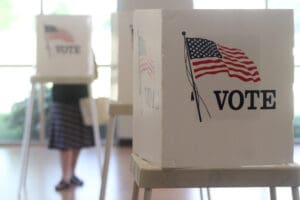
Taxes are on the ballot this November—not just in the sense that candidates at all levels are offering their visions for tax policy, but also in the literal sense that voters in some states will get to decide important questions about how their states raise revenue.
9 min read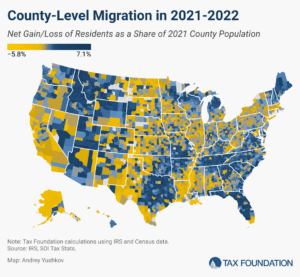
The latest IRS and Census data show that people and businesses favor states with low and structurally sound tax systems, which can impact the state’s economic growth and governmental coffers.
8 min read
While many factors influence business location and investment decisions, sales taxes are something within policymakers’ control that can have immediate impacts—especially as a large number of major cities have combined rates of 9 percent or more.
6 min read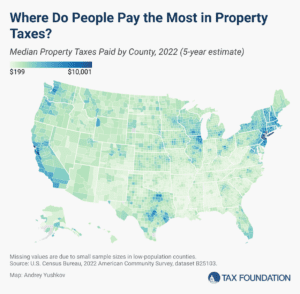
Property taxes are the primary tool for financing local governments and generate a significant share of state and local revenues.
6 min read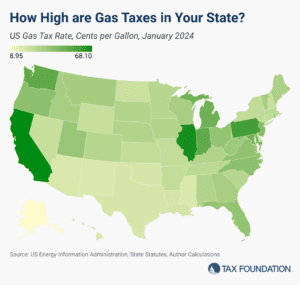
Though gas taxes are intended to serve as user fees and pollution deterrents, they vary widely across states. How does your state’s burden compare?
4 min read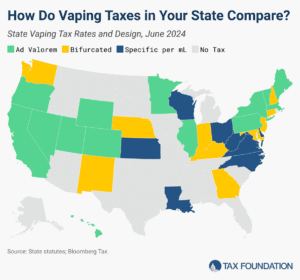
As much as 98 percent of vaping products sold in the US are illicit. Most states levy an excise tax on vaping products, but these tax systems vary substantially. The result is a messy tax system covering largely illicit products, and no one knows whether taxes are being collected and remitted on most products sold nationwide.
7 min read
However well-intended they may be, sales tax holidays remain the same as they always have been—ineffective and inefficient.
11 min read